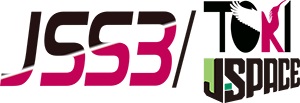Comparison of two-dimensional turbulent on a rotating sphere and a beta-plane by Lyapunov analysis
JAXA Supercomputer System Annual Report February 2021-January 2022
Report Number: R21EACA46
Subject Category: JSS Inter-University Research
- Responsible Representative: Kiori Obuse, Associate Professor, Oakayama University
- Contact Information: Kiori Obuse(obuse@okayama-u.ac.jp)
- Members: Shoichiro Hara, Kiori Obuse
Abstract
When considering two-dimensional turbulence on a rotating sphere, there are, broadly speaking, a spherical model that treats the flow field on the sphere itself, and a beta-plane (approximation) model that considers the flow field on a tangent plane at a point on a rotating sphere. Beta-plane model is used in many planetary atmospheric studies due to its simplicity. However, it has been confirmed that these two mathematical models show completely different behaviour in some aspects. An example is the difference in the formation of large-scale zonal flows, which are often discussed in relation to the zonal structure in Jupiter’s atmosphere for example. It is therefore very important to understand the reliability of the use of beta plane models for different purposes. The aim of this research project is to discuss the time evolution characteristics of two-dimensional turbulence in both models and to investigate the scope of application of the beta plane approximation through Lyapunov analysis.
Reference URL
N/A
Reasons and benefits of using JAXA Supercomputer System
Since the research group with which we might collaborate had an account on the JAXA supercomputing system, we considered it desirable to use this system for sharing data in case of collaboration.
Achievements of the Year
In this research project, Lyapunov analyses were carried out for flow fields with large-scale structure (basic fields) in two-dimensional turbulences on a rotating sphere and on a beta-plane.
Using the method of Shimada-Nagashima (1979), the leading 15 Lyapunov exponents were examined. The values are smaller on the beta-plane than on the sphere, and 15 Lyapunov exponents on a beta-plane were found to be strongly degenerate. Then, the 15 leading Lyapunov vectors (covariant Lyapunov vectors) were obtained numerically by using the method proposed by Ginelli et al. (2007). It was found that all 15 Lyapunov vectors on the sphere have spiral structures over each hemisphere, especially having strong values around the poles. On the beta-plane, on the other hand, none of the Lyapunov vectors showed a clear structure. The very different nature of the Lyapunov exponents and Lyapunov vectors on the sphere and the beta-plane suggests that the beta-plane may not be a good approximation of the sphere, at least when considering problems where Lyapunov exponents and vectors are involved, and possibly for problems involving flow changes on long time scales.
We also believe that the spiral structures appear in Lyapunov vectors on the sphere may be involved in the transport of some quantities, and that an understanding of the emergence of these structures may provide insight into the formation and the maintenance of large-scale structures on the sphere. The origin of the spiral structure is still under investigation. Furthermore, the spiral structures appear to rotate at constant angular velocites around the axis of rotation of the sphere, and these angular velocity appear to be related to the angular velocity at which the large-scale structure in the basic flow field rotates around the axis of rotation. The actual relationship between these is currently under investigation.
Publications
– Invited Presentations
Kiori Obuse, “Spherical and beta-plane approximation models for two-dimensional turbulence on a rotating sphere”, AAPPS-DPP2021, 29th September 2021
Kiori Obuse, “Towards an understanding of the mechanism of zonal flow formation “,
– Oral Presentations
Shoichiro Hara and Kiori Obuse, “Comparison of two-dimensional turbulent on a rotating sphere and a beta-plane by Lyapunov analysis”,The Physical Society Japan 2022 Annual Meeting, 17th March 2022
– Other
Shoichiro Hara, “Comparison of two-dimensional turbulent on a rotating sphere and a beta-plane by Lyapunov analysis”, Master’s Thesis, Graduate School of Environmental and Life Sciences, Okayama University, Febuary 2022
Usage of JSS
Computational Information
- Process Parallelization Methods: N/A
- Thread Parallelization Methods: OpenMP
- Number of Processes: 1
- Elapsed Time per Case: 50 Hour(s)
JSS3 Resources Used
Fraction of Usage in Total Resources*1(%): 0.01
Details
Please refer to System Configuration of JSS3 for the system configuration and major specifications of JSS3.
| System Name | CPU Resources Used(Core x Hours) | Fraction of Usage*2(%) |
|---|---|---|
| TOKI-SORA | 268372.92 | 0.01 |
| TOKI-ST | 0.00 | 0.00 |
| TOKI-GP | 0.00 | 0.00 |
| TOKI-XM | 0.00 | 0.00 |
| TOKI-LM | 0.00 | 0.00 |
| TOKI-TST | 0.00 | 0.00 |
| TOKI-TGP | 0.00 | 0.00 |
| TOKI-TLM | 0.00 | 0.00 |
| File System Name | Storage Assigned(GiB) | Fraction of Usage*2(%) |
|---|---|---|
| /home | 250.00 | 0.25 |
| /data and /data2 | 10440.00 | 0.11 |
| /ssd | 200.00 | 0.05 |
| Archiver Name | Storage Used(TiB) | Fraction of Usage*2(%) |
|---|---|---|
| J-SPACE | 0.00 | 0.00 |
*1: Fraction of Usage in Total Resources: Weighted average of three resource types (Computing, File System, and Archiver).
*2: Fraction of Usage:Percentage of usage relative to each resource used in one year.
ISV Software Licenses Used
| ISV Software Licenses Used(Hours) | Fraction of Usage*2(%) | |
|---|---|---|
| ISV Software Licenses(Total) | 0.00 | 0.00 |
*2: Fraction of Usage:Percentage of usage relative to each resource used in one year.
JAXA Supercomputer System Annual Report February 2021-January 2022


